To celebrate 30 years since Life Time first opened its doors in July 1992, we’re sharing stories from just a few of the people who have made the very most of their memberships. A woman who began strength training so she could lift her disabled daughter, a former wrestler who got in shape and found his way back to the sport in his 60s, and more incredible individuals — all demonstrating how choosing to embrace physical fitness can change us from the inside out.
Rebuilding Resilience
Ryan Jurgenson
Life Time River North at One Chicago
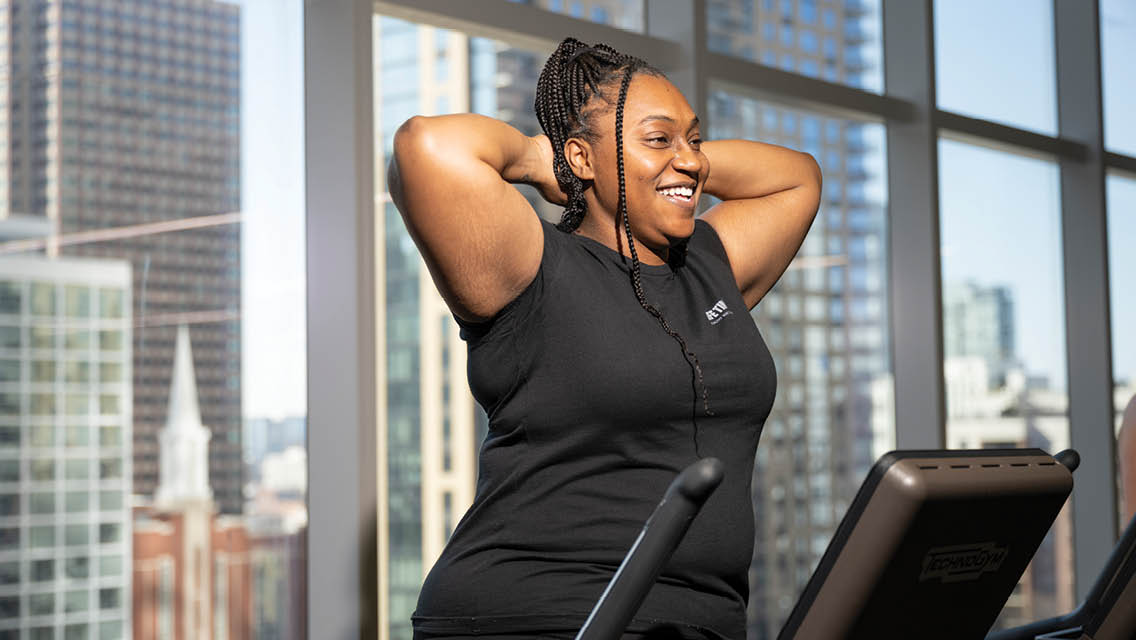
Her family calls her Ryan 2.0. She calls herself Resilient Ry.
As a teenager, Ryan Jurgenson loved swimming and working out with her mom at the Life Time near their home. But the stress of a bad relationship as a young adult led to rapid weight gain — 80 pounds in about six months — and a lost sense of herself.
Ryan avoided family and friends; she didn’t want to be seen. She stopped caring about her appearance and tending to some of her own needs. “I would get my kids bundled up when it was cold, and I wouldn’t even have a hat on,” she recalls. “My mom would say to me, ‘If you get sick, what’s going to happen to them?’”
Then a beloved aunt was diagnosed with stage IV breast cancer. Facing her aunt’s mortality awakened something in Ryan. “I realized that I was missing out on so many great moments in my life — as a family member and as a mom,” she says.
Drawing on her positive memories of working out at Life Time, Ryan joined the Orland Park club near Chicago. With a good friend along for moral support and accountability, she began a fitness journey focused on strength and resilience — including a four-month quest to nail a 30-inch box jump.
The box-jump goal was actually based on her misunderstanding of a personal trainer’s instructions. He had proposed jumping up from a seated position on a plyo box, not jumping onto the box from the ground.
Ryan’s friend captured attempt after attempt on video for Ryan’s Instagram page as she built the strength and power to finally achieve her goal. “I’m not a quitter,” she says.
Though Ryan has always wanted to help others — she attended nursing school and has worked as a patient-care tech at a local hospital — her self-care journey inspired a career change. She now works full-time for Life Time at the River North location while she studies to become a personal trainer.
Her three daughters inspire her ongoing pursuit of health, as well.
“As a mom, I would be over the moon if I’m able to teach my girls that they have the right to live and be themselves on their terms,” she says. “I want them to be confident and happy with themselves and to take up their space in the world.”
Watch Ryan’s story here.
—JILL PATTON
Turning Loss into Strength
Ali Sorour
Life Time Plymouth (Minnesota)
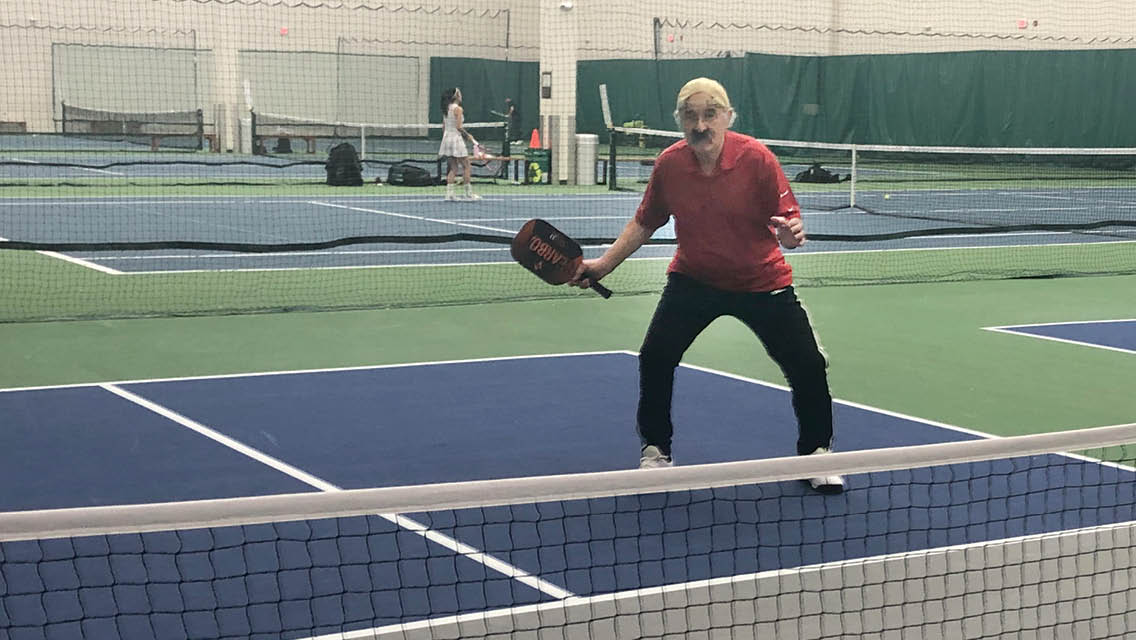
Ali Sorour holds on to his memories, but he lives his life looking forward.
Ali first came to the United States from Iran in the early 1970s to study engineering. He met his wife, Minoo, playing volleyball, and for more than 40 years they enjoyed an active life together. In 2016, Minoo was diagnosed with leukemia, and their world changed.
Ali cared for Minoo until she passed away in late 2017, and it was her doctor who suggested Ali seek professional support for his grief. Through counseling, he learned to retain his cherished memories without becoming overwhelmed by the accompanying emotions.
“I cannot detach memories from my life,” he says. “But I can remove the intense emotion from my memories. Now I can see the light at the end of the tunnel.”
While undergoing grief counseling, Ali began volunteering at the cancer clinic where Minoo had received care. And he returned to Life Time, where he and Minoo had been members for many years.
His approach to fitness has changed. From ages 8 to 72, Ali played soccer. But the COVID-19 pandemic and knee problems sidelined him, and in 2021 he underwent two knee-replacement surgeries. A friend recommended pickleball as a game he could play as he recovered.
Ali now plays pickleball at Life Time three or four times a week and hopes to test his new knees on the tennis courts this summer. “But pickleball is going to be my main sport,” he says. “When you get older, your body talks to you. My body is telling me, ‘Hey, pickleball is the game for you!’”
Staying active has helped Ali cope with his loss. And though he once had a competitive side, he hung up that mentality with his soccer cleats. “I don’t want to be competitive anymore. I just want to be involved,” he explains. “I have met a lot of good friends since I started playing pickleball.”
In fact, the person who introduced him to pickleball has become his new companion.
“I go to the cemetery every Friday,” Ali says. “She comes with me. She lost a love, too, to Guillain-Barré Syndrome. We are sharing the same pain. We are helping each other. My memory is there, but she is a part of my life now and I’m happy.”
—JP
Wrestling Adversity
Dean Barnard
Life Time Johns Creek (Georgia)

Everything fell apart for Dean Barnard in 2002. He lost his prestigious job; his marriage disintegrated. He was going broke and losing hope.
“It was the first time in my life that things had really turned south for me, and I realized that I didn’t know who I was anymore,” he recalls. “I had a plan to go into the garage, shut the door, and start the car. I was ready to say goodbye to it all.”
With the help of his two sons, Dean recommitted to what he calls his four Fs: faith, family, friends, and fitness. In the process, he rediscovered a part of himself that he’d lost long ago — his identity as a wrestler.
“Of all my successes over the years, wrestling was the one I was most proud of,” he admits. “I was a state champion in high school and was recruited to wrestle at the University of Iowa, one of the best programs in the country.”
But the 66-year-old was battling arthritis in his right foot and had spent 45 years away from the mat. “For most people, a return to wrestling would have been unthinkable,” he says. “But I’m not one to take no for an answer.”
So, when John Hanrahan, a former Penn State wrestler Dean met at an Atlanta-area Life Time in 2015, told him about a Masters Wrestling league, he was more than ready to make the leap.
He started working out twice a day and practicing his wrestling moves every Sunday.
At the United World Wrestling Championships in Walbrzych, Poland, a year later, Dean beat a former world champion and reached the semifinals before being eliminated. The experience convinced him to work even harder.
“I started attending Life Time’s group fitness classes to focus on building my strength and endurance,” he recalls. “Since then, I’ve never looked back. Now I do morning classes and sometimes another in the evening.”
By 2018, Dean had lost 25 pounds, had eased the arthritis in his foot, and was ready to compete in the 65+ bracket of the world championships in Las Vegas. Down by three points in the championship match, he put his opponent on his back in the last 12 seconds to claim the World freestyle gold medal to go along with the Greco-Roman silver medal he’d won earlier in the tournament.
Dean credits his earlier struggles with helping him find his true identity and purpose. “I know that I’m made to wrestle; I wouldn’t be the same person without this sport in my life,” he says. “While I’d never guessed I’d be here today — pursuing world championships at 70 years old, keeping my best fitness in decades — I couldn’t imagine life being any better.”
See Barnard’s original Success Story here.
—CRAIG COX
Riding with Gratitude
Ken Zylstra
Life Time Savage (Minnesota)
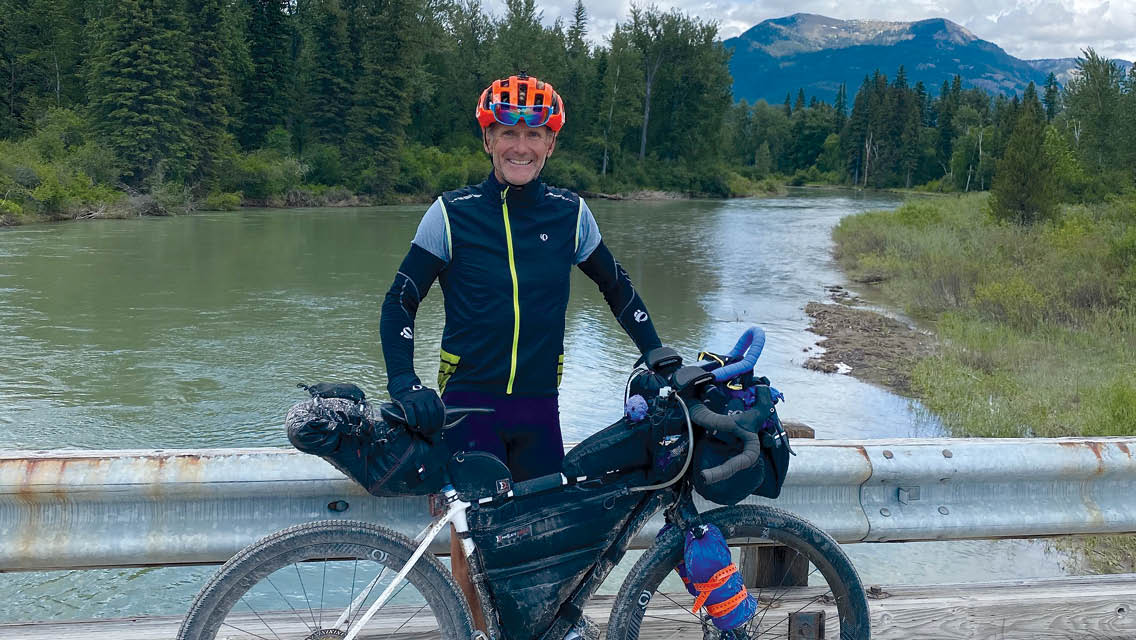
In the middle of a narrow trail 11,000 feet high in the Rockies, endurance cyclist Ken Zylstra came upon a newborn antelope.
“It was just born, still wet,” says Ken, the president of his own service company (and a former Life Time executive), recalling the awe of this brief encounter last summer as he and a small team rode the 2,745-mile Tour Divide from the Canadian border to the Mexican border.
It was one of many transcendent moments on a grueling 27-day ride that crisscrossed the Continental Divide 32 times — moments that punctuated hours and days of hardship and uncertainty.
“We had the opportunity to ride through some of the most majestic and untraveled areas of the Rocky Mountains,” Ken says, reflecting on the unobscured sunrises and sunsets, ever-changing weather, unforgiving terrain, and wild nature.
Ken, then 59, had completed many ultra-distance races — including the notoriously grueling Leadville Trail 100 MTB — some of which were arguably more dangerous because of their remoteness or extreme conditions. Yet the Tour Divide represented the pinnacle of his decades-long cycling career. It had long been on his bucket list, though taking a month off to ride it — let alone train for it — hadn’t seemed feasible.
Then in 2021, life circumstances offered Ken an unexpected summer off. With his family’s support, he prepped for two months, strength training at Life Time in Savage, Minn., and taking Life Time’s on-demand yoga classes at home.
The ride was unsupported — no SAG (support and gear) stops, no crews — so careful planning and constant recalculations were essential. Cafés and grocery stores weren’t reliably open because of the pandemic. When trail conditions slowed the team down, they couldn’t reach planned campsites and lodging. Crossing the Great Divide Basin in southwestern Wyoming meant pedaling 300 miles with no opportunities to resupply water or food.
“The Tour Divide was definitely the most difficult,” Ken recalls, comparing it with other rides he’s done. “Physically, mentally, emotionally — day after day.”
Yet, when things felt impossible on the trail, he was able to draw on a deep well of appreciation for this unlikely opportunity (as well as his training and experience) to persevere. “‘Remember, guys, we get to do this,’” he’d remind his team.
“There’s a simplicity on the trail that I’m so drawn to,” Ken explains. “You move forward, you eat, you sleep, you drink, and you try to stay safe, and then you repeat. There’s a solitude, a cleansing, that happens out there that is so pure, that just filters everything in your soul.”
—JP
Finding Strength x 2
Julie Porras
Life Time City Centre Houston
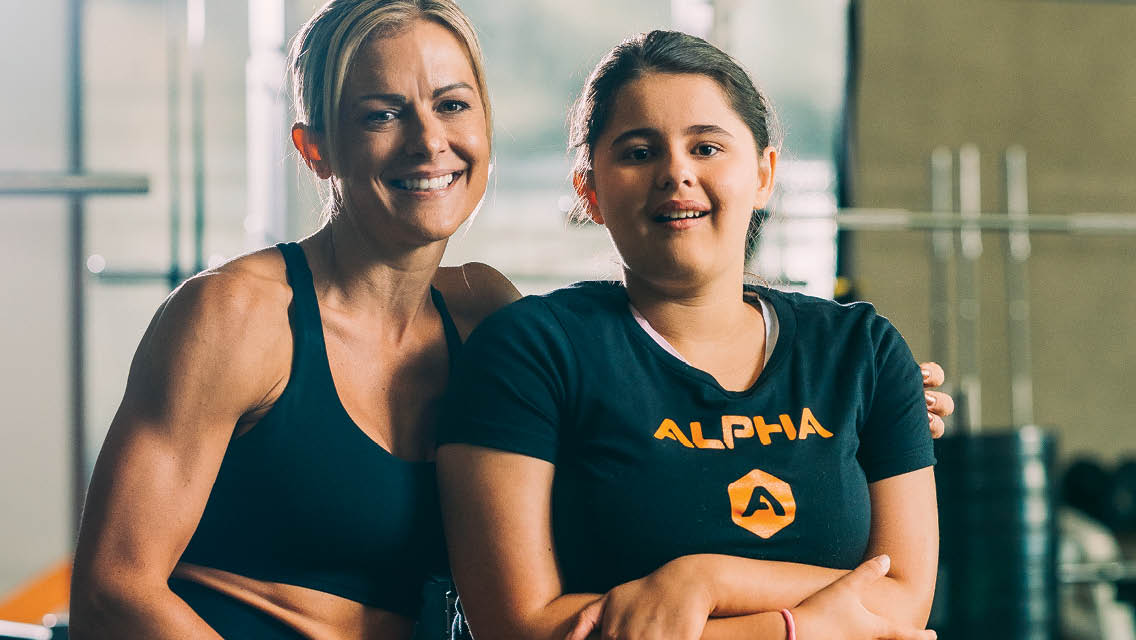
Julie Porras’s daughter, Elena, was just hours old when she received her first dose of chemotherapy. Diagnosed with stage III neuroblastoma, Elena immediately began a six-round course of chemo; at five months, she endured a 10-hour surgery to remove the tumor.
Elena faced many challenges during the early years of her life. The tumor had compressed her spinal cord, paralyzing her from the waist down. Chemotherapy had damaged her developing brain, permanently impairing her cognition. Julie struggled to hold herself together.
“I was treading water,” Julie recalls. She eventually reached a crisis point where she felt such despair and anxiety that she no longer wanted to live. She sought out therapy; she also began running to manage her extreme depression.
Those interventions helped, but Julie’s challenges soon became physical, as well: As Elena grew, she became more difficult for Julie to pick up and carry.
A Life Time trainer suggested Julie try Olympic weightlifting. Intimidated but inspired, she learned the basics from her trainer and started attending Alpha classes at her club. “Fast-forward, Elena’s now 130 pounds and she never asks if she’s too heavy,” Julie says. “I lift her easily.”
A funny, arts-and-crafts-loving 15-year-old, Elena now enjoys working out with her mom. Her own twice-a-week training at Life Time — in group settings and one-on-one with a personal trainer — has connected her with other members and staff, who are drawn to her wry humor and optimism.
And her workouts have helped her achieve levels of physical independence Julie could never have imagined. “Just recently she got into the passenger seat of the car with no assistance, which is major,” Julie reports. “She had the strength and confidence to do that because of her work here.”
Julie’s own physical strength — she now trains two hours a day, seven days a week — and her hard-won insights as the parent of a disabled child have given her emotional resilience and perspective.
“I think there’s a grander scheme,” she says. “We can reach people and teach them to love. That’s what Elena does. She teaches people love and happiness and choosing to look at situations with gratitude.”
Though some days are tough, and Elena’s health remains compromised, mother and daughter hold on to optimism.
“Elena chose me to be her mom because I’m strong enough to be her mom,” Julie says. “I’m capable enough and I appreciate the gift that she is and her purpose on Earth. She’s been my biggest blessing. She’s taught me so much.”
Watch Julie and Elana’s story here.
—JP
Going the Distance
Louie McGee
Life Time Highland Park (Minnesota)
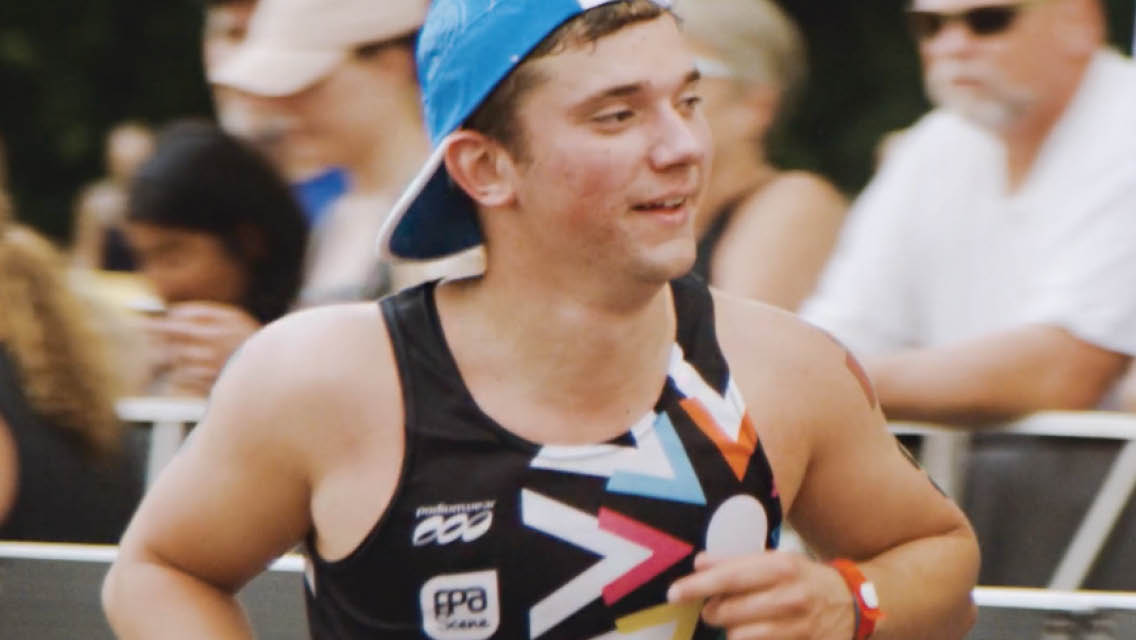
The 2017 Life Time Triathlon in Minneapolis holds a special place in Louie McGee’s heart. It was his experience in that athletic event that spurred the then 17-year-old, who is legally blind, to declare his intention to complete an Ironman.
Louie was a strong swimmer, but he’d never biked more than 30 miles or run more than six. So, when he floated the idea of swimming 2.4 miles, pedaling 112 miles, and running a marathon — all in a single day — his parents vetoed it. He persisted, though, and they eventually consented. He could register for the Louisville Ironman the following year, they said, but he had to handle the details and find a guide.
Milan Tomaska turned up through Facebook connections. A 10-time Ironman finisher, Milan had never even met a blind person but was willing to train Louie and guide him through the event.
They trained together for about five months. “Milan was willing to do whatever it took to help me improve and get me over the finish line,” Louie recalls. “His heart was always in the right place. Knowing that motivated me to keep going.”
Race day dawned cold and rainy. Louie had fought off a fever the night before and rose feeling doubtful about his prospects. To make matters worse, the person who was supposed to drive them to the starting line never showed up, so they had to walk the two miles to get there. “I was cold and miserable,” he recalls, “and my nerves were like nothing I had experienced before.”
The Ohio River current was so strong that race officials were forced to shorten the swim to one mile — all downstream. Still, Louie found himself struggling to keep track of Milan. The transition to their bike took almost 10 minutes to complete.
Once they were on their way, the pouring rain and 45-degree temperature made it impossible for Louie to grasp his water bottle. “I was so happy to get off the bike that I was actually looking forward to running a marathon, which I never thought I’d say.”
At the chaotic finish line, Louie landed in the arms of an “athlete catcher” and learned he and Milan had finished in 12 hours, 58 minutes, and 52 seconds. He hugged his family, who had done so much to support his efforts, before the first-place finisher approached him and handed Louie his bouquet of roses. “You showed me what this race is all about,” he told him.
“My intention had been to motivate other blind kids,” Louie notes, “so I was surprised I had also made an impression on the guy who won.”
Louie spent much of the first half of 2022 interning at a company in London and backpacking across greater Europe, but no matter where he ends up, he says, he will always remember that Life Time Triathlon in Minneapolis “as the race that got me started.”
See McGee’s original Success Story here.
—CC
Taking the Challenge
Phyllis Jones
Life Time Novi (Michigan)
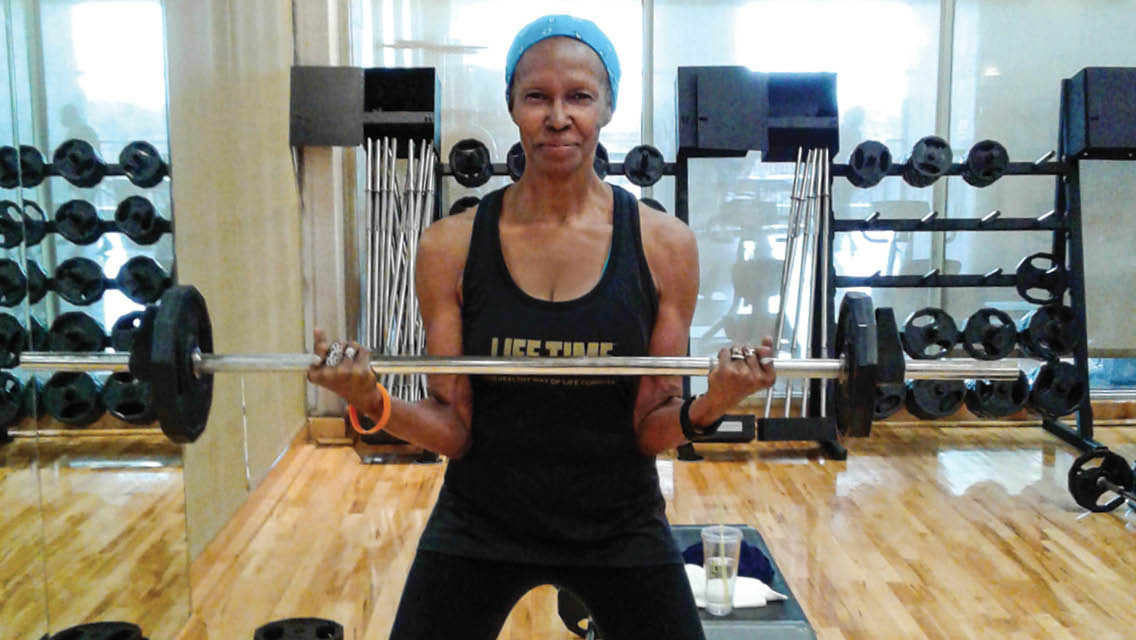
A brain aneurysm changed Phyllis Jones’s life — in a good way.
Struck down in 2011, Phyllis spent a month in the hospital and reemerged determined to return to the healthy lifestyle she and her husband had once enjoyed. She’d been a dancer and her husband had played college football, but the pressures of their stressful jobs had pushed physical activity beyond their reach in the years prior to her illness. She’d put on some weight and suddenly felt compelled to do something about it.
“We both loved being active, but between our jobs and shifting schedules, that lifestyle fell by the wayside over the years,” she admits. “I wanted to get it back.”
Following her hospital stay, months of physical therapy at her Michigan home helped Phyllis gradually regain her strength and coordination. Eventually, she was able to participate in water-fitness classes and Pilates sessions at the nearby Life Time club in Novi.
Two years after suffering the aneurysm, she felt she was still carrying too much weight, so she signed up for what was then known as Life Time’s 90-Day Challenge (now the 60day Challenge).
Phyllis had participated in group fitness classes before but found it too easy to make excuses for skipping a session. The Challenge was different. “I was surrounded by people who wanted to change their lives for the better, too,” she notes. “We were in it together, so it was easy to stay accountable.”
The trainer emphasized setting goals both for the duration of the Challenge and for the long term, and a nutritionist took the group to a grocery store to help them restock their pantries with healthier choices. Phyllis soon found herself feeling “more comfortable in my skin.”
She’d lost some weight by the end of the 90 days but knew there was more work to be done. Many of the people she’d met had signed up for the next Challenge, so she joined them. Today, she has completed the Challenge a dozen times.
And although she has managed to shed 70 pounds since she began tackling the Challenges, Phyllis now looks beyond the scale when recalling her healthy-living journey. “I’ve found the active life I was missing before my aneurysm — and the focus and the supportive community to help me keep going.”
Her Life Time friends have continued to support her health throughout the pandemic. While the clubs were closed, they would challenge each other to post their daily fitness accomplishments on social media. “So now in 2022,” she says, “I have not gained any pounds back. I use all the platforms I am blessed to have access to . . . including back in person at my happy place!”
See Jones’s original Success Story here.
—CC
Moving for Mental Wellness
Jessica Tobin
Life Time Austin – North (Texas)
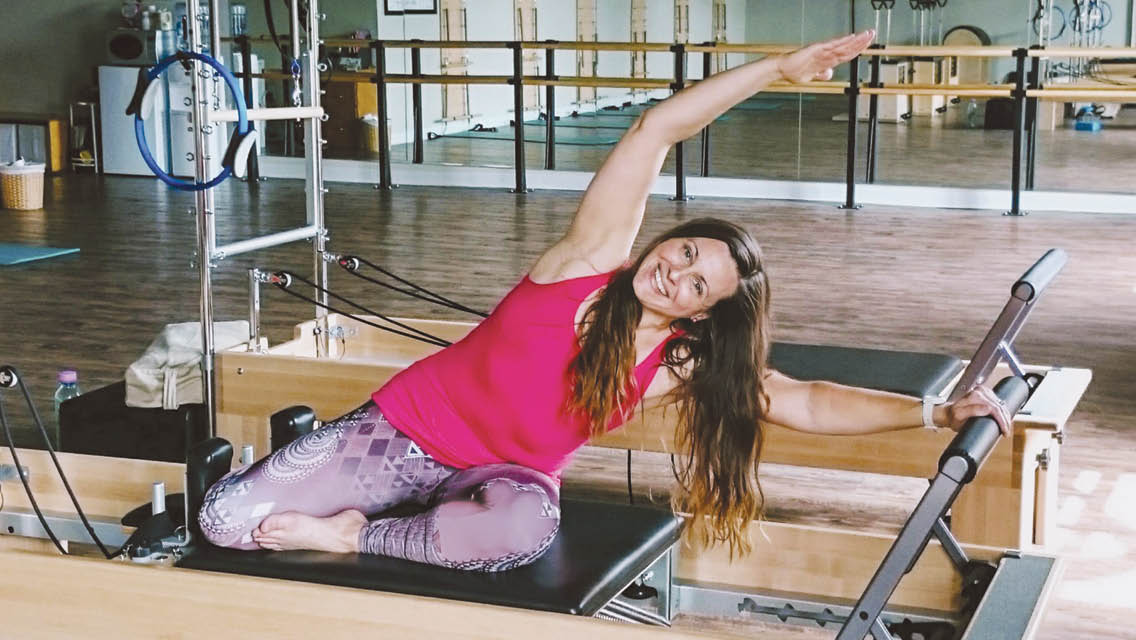
For three years after the birth of her second child in 2006, Jessica Tobin struggled to return to her formerly active life. Feeling overweight and overwhelmed, she began working out every night at a Life Time club near her Austin, Texas, home. Those evening workouts, she recalls, “were the only reason I was able to get through the first few years of my children’s lives without going insane.”
Jessica lost the baby weight and began to feel better about herself, but she soon was faced with a more complicated health issue. After months of fruitless exams, faulty diagnoses, and needless surgical procedures, she learned that the debilitating cramps she’d been experiencing were caused by pelvic-floor dysfunction — a common condition among postpartum women.
A few months of weekly physical-therapy sessions brought relief, and Jessica continued working with her therapist for another year while also practicing visualization techniques, massage, and breathing exercises. At the same time, she was studying for her personal-training certificate from the American College of Sports Medicine. “Dealing with stress in a positive way allowed my body to relax so my therapy could yield maximum results,” she explains. “I learned how powerfully my mind could affect my physical self.” By 2012 she was able to return to her normal workout regimen.
In March of that year, she and her family relocated to Rochester, N.Y., where she no longer had access to a Life Time club. But thanks to the foundations she’d developed in Austin, she eventually discovered and fell in love with Pilates. The exercises stretched and strengthened her entire body, and she could apply all she’d learned in physical therapy about muscle release and engagement.
“And the mental benefits were just as valuable,” she adds. “The posture and breath work were a huge stress relief, and I always left class feeling calm and focused.”
Two years later, Jessica gained accreditation as a certified Pilates instructor, which gave her the opportunity to help other women address pelvic-floor issues.
“I love being able to pass along lessons from my own rehabilitation journey and to help my students realize the value of integrative fitness — including rest and recovery.”
See Tobin’s original Success Story here.
—CC
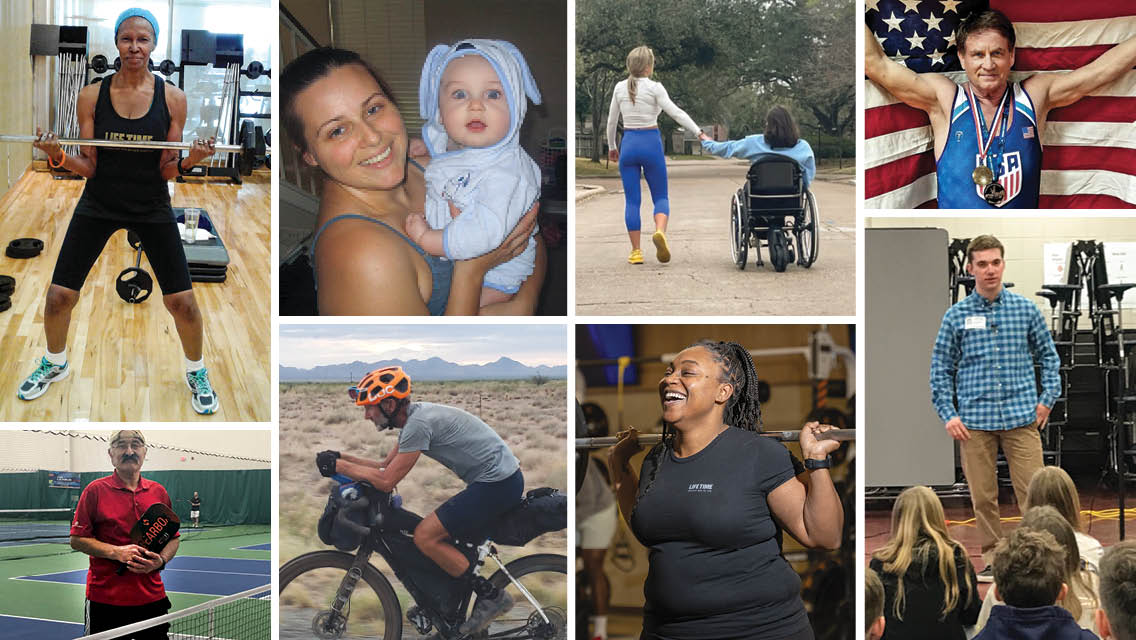

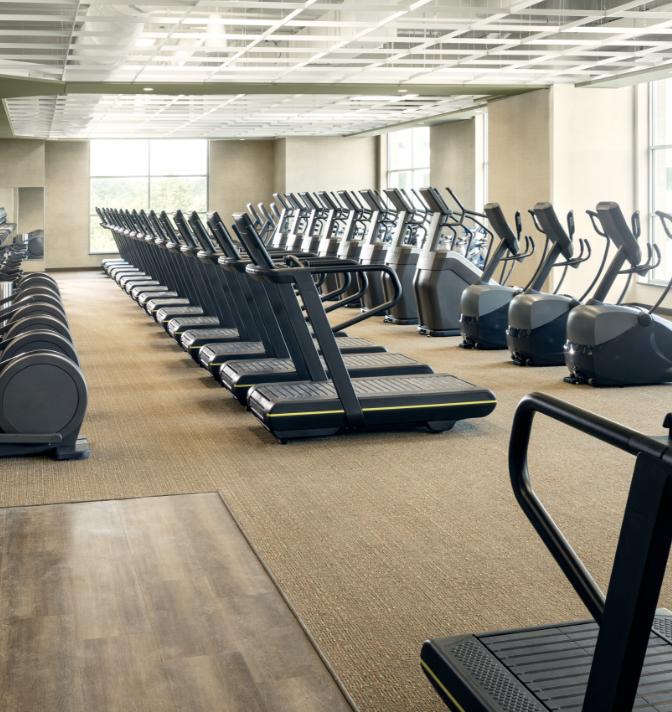
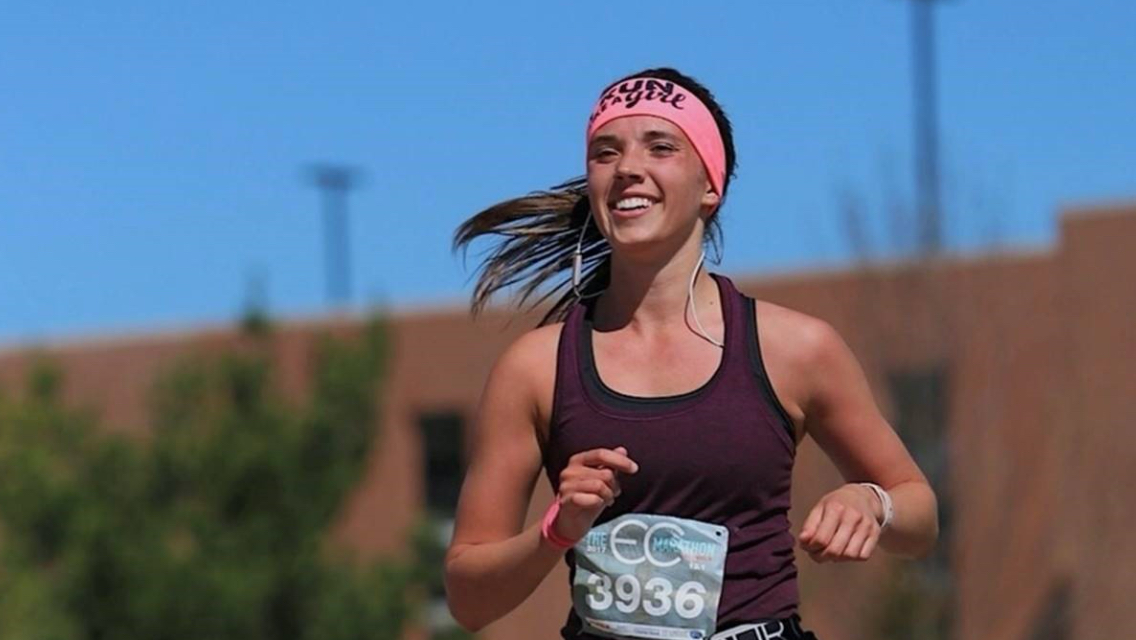
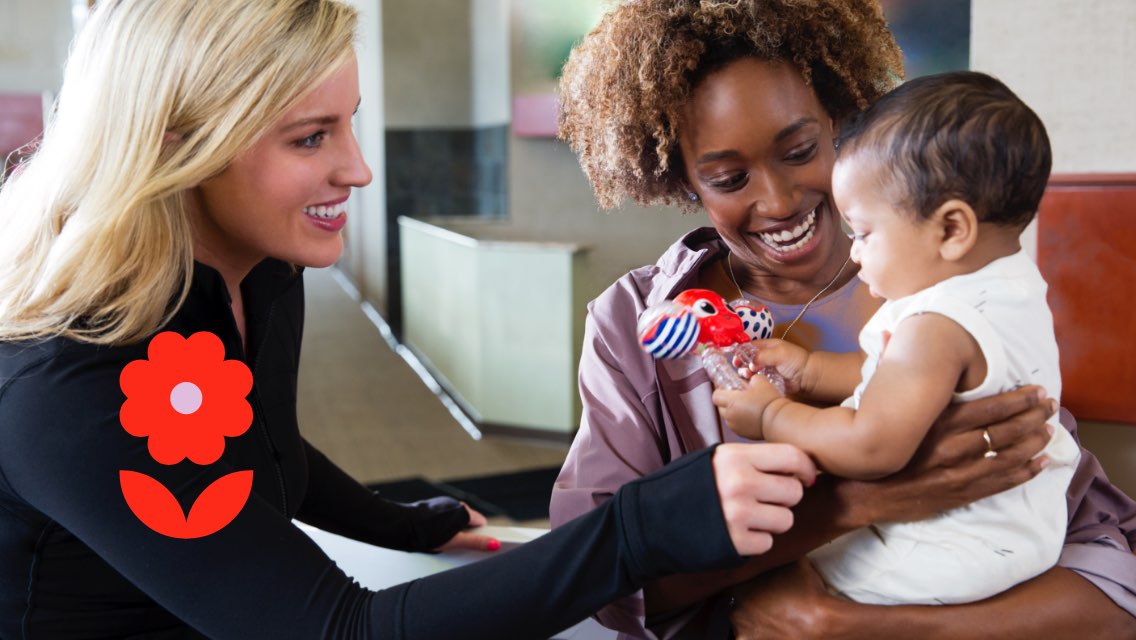
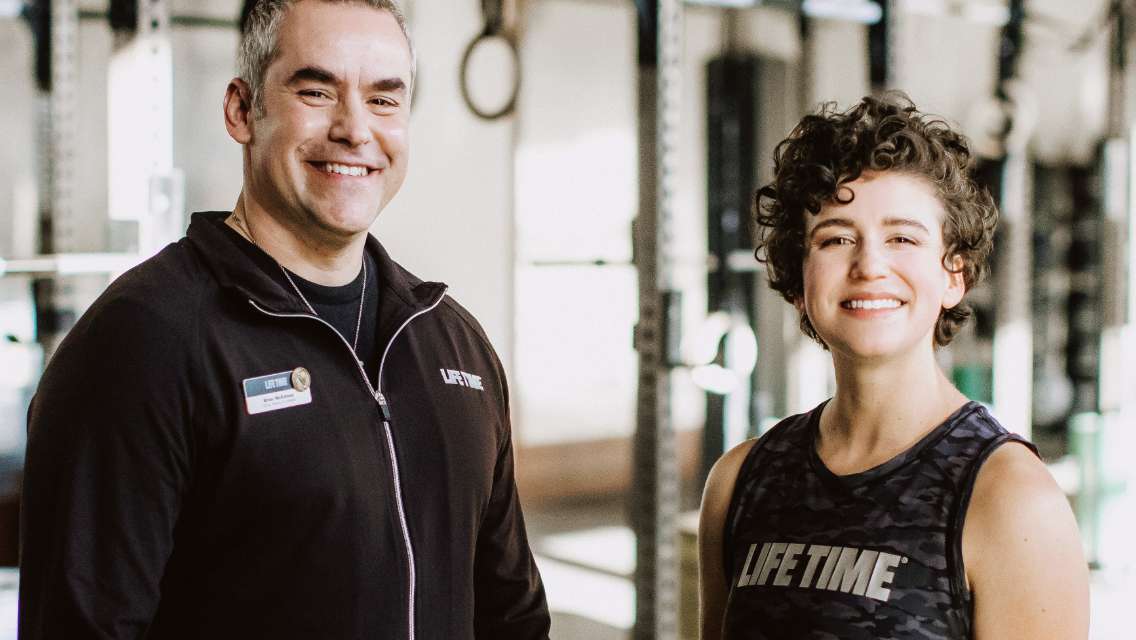
This Post Has 0 Comments